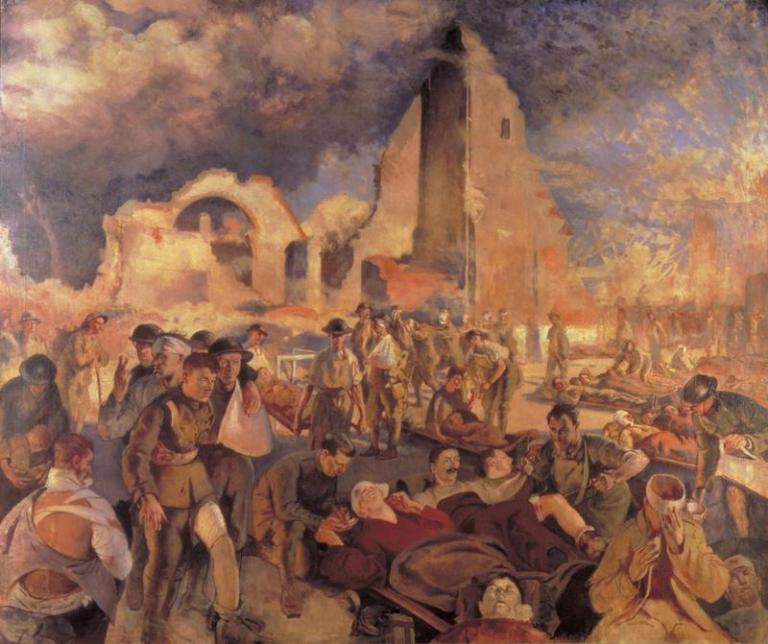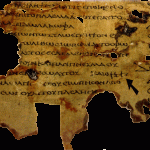
***
A new article, written by an author whose name is a hiss and a byword among decent people everywhere, has appeared in Interpreter: A Journal of Latter-day Saint Faith and Scholarship:
“Better Kingdom-Building through Triage”
Abstract: We are called to take the Gospel to the entire world, but our numbers are few and our time and resources are limited. This is where cold calculation can help. A field-surgical technique pioneered during the Napoleonic Wars of the early nineteenth century and refined in the butchery of World War I a century later offers a useful model for making our missionary efforts more efficient and more effective.
It was inspired by what said author has observed right here in the comments section of this blog, as well as elsewhere.
***
And, to celebrate the coming weekend, here are a few links to some articles that were published in a prior issue of Interpreter:
Don Bradley, “A Passover Setting for Lehi’s Exodus”
Abstract: Later in his life, former Palmyra resident Fayette Lapham recounted with sharp detail an 1830 interview he conducted with Joseph Smith Sr. about the coming forth of the Book of Mormon. Among the details he reports that Lehi’s exodus from Jerusalem occurred during a “great feast.” This detail, not found in the published Book of Mormon, may reveal some of what Joseph Sr. knew from the lost 116 pages. By examining the small plates account of this narrative in 1 Nephi 1−5, we see not only that such a feast was possible, but that Lehi’s exodus and Nephi’s quest for the brass plates occurred at Passover. This Passover setting helps explain why Nephi killed Laban and other distinctive features of Lehi’s exodus. Read in its Passover context, the story of Lehi is not just the story of one man’s deliverance, but of the deliverance of humankind by the Lamb of God. The Passover setting in which it begins illuminates the meaning of the Book of Mormon as a whole.
[Editor’s Note: This article is an excerpt from Chapter 7 of the author’s new book, The Lost 116 Pages: Reconstructing the Book of Mormon’s Lost Stories (Salt Lake City: Kofford Books, 2019).]
David L. Clark, “Hugh B. Brown’s Program for Latter-Day Saint Servicemen During WWII”
Abstract: Prior to U.S. involvement in WWII, the First Presidency asked Hugh B. Brown to initiate and serve as coordinator of a program that would reinforce the spiritual welfare of the increasing number of Latter-day Saint men entering the military. Brown initially answered the challenge by organizing religious services at training camps along the West Coast because of the large number of Church-member men training there. However, following Pearl Harbor, he expanded the program to 65 training camps in many parts of the country. He also created USO-type facilities in Salt Lake City and San Diego, distributed pocket-size scriptures, wrote faith-strengthening articles, and answered requests for spiritual support from Latter-day Saint servicemen. In 1943, Brown’s program enlarged with the addition of assistant coordinators and became part of the newly formed Servicemen’s Committee chaired by Elder Harold B. Lee. In 1944, Brown was recalled as the British Mission president and left 13 assistants to manage his program through the conclusion of the war. Interviews with veterans who experienced Brown’s program suggest that the pocket-size copies of the Book of Mormon carried everywhere, even in battle, may have been Brown’s most significant contribution to their war-time spiritual maintenance.
John Gee, “Conclusions in Search of Evidence”
Review of Jana Riess, The Next Mormons: How Millennials Are Changing the LDS Church (New York: Oxford University Press, 2019). 312 pages. $29.95.
Abstract: Riess’s book surveying the beliefs and behaviors of younger members of The Church of Jesus Christ of Latter-day Saints was supposed to compare the attitudes of younger generations with those of older generations. Unfortunately, flaws in the design, execution, and analysis of the survey prevent it from being what it was supposed to be. Instead the book is Riess’s musings on how she would like the Church to change, supported by cherry-picked interviews and an occasional result from the survey. The book demonstrates confusion about basic sampling methods, a failure to understand the relevant literature pertaining to the sociology of religion, and potential breaches of professional ethics. Neither the survey results nor the interpretations can be used uncritically.
Kristine Wardle Frederickson, “Musings on the Birth of the Savior Jesus Christ”
Abstract: In this essay, Kristine Wardle Frederickson muses about “the babe born in Bethlehem,” and who he was — and is — in consideration of those who nurtured, loved, and welcomed the infant Jehovah to Earth. Certain women played critical roles in preparing him for his infinite and eternal Atonement, and that preparation began long before Jesus came to Earth. Four women stand out as devoted mentors, disciples, and witnesses of Jesus Christ’s mission, and of his sublime perfection even on that first Christmas day: Heavenly Mother, Mary, Elisabeth, and Anna. At Christmastime, their witnesses are worthy of deep contemplation as they reinforce the majesty and glory of Jesus Christ, who condescended to enter mortality as an innocent baby, under humble circumstances. Carefully nurtured and loved, he lived a perfect life, pointed the way to salvation, and sacrificed his life that all might live.
***
We’re not exactly embarrassed about this article, which I found in the Christopher Hitchens Memorial “How Religion Poisons Everything” File©:
***
Finally, here’s an argument from a very eminent and authoritative source against wearing masks during the coronavirus pandemic:
“It Won’t Be That Hard to Get People to Accept the Mark of the Beast”












